2006 Lincoln Zephyr Preview Motive can often play a key role in how a business decision is viewed by the public. In general, it's probably fair to say that choices made from strength are viewed as being better than those made from desperation. Which is why the efforts of the struggling Ford Motor Company to take an existing product from one of its divisions and develop no less than 10 new models spread across three other divisions because it can't afford to develop product any other way is viewed with concern in some quarters. I mean, are we supposed to believe that pretty much the only avenue of product development left to the cash-strapped firm happens to be the best one available, that turning the Mazda6 sedan into various Ford, Mercury and Lincoln models is the way to sales salvation for the Detroit firm? As it happens, it may well be. You only have to look at the fabulous products for different applications and markets that GM is getting from what it calls its architectures to see that it can be done. 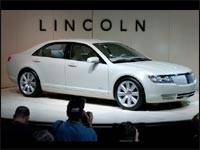 So you look at the Zephyr concept car unveiled at the New York auto show as the first of the 10 new models based on the CD3 platform and wonder if Ford's product engineers have successfully morphed the Mazda6, which has not been successful in Canada, into a premium-priced Lincoln. So you look at the Zephyr concept car unveiled at the New York auto show as the first of the 10 new models based on the CD3 platform and wonder if Ford's product engineers have successfully morphed the Mazda6, which has not been successful in Canada, into a premium-priced Lincoln.
The man in charge of supplying Ford's North American operations with products, Phil Martens, adamantly claims that they have. Ford's group vice-president for North American product development says there will be no mistaking the Zephyr for the Mazda6. Other car companies have been doing this for some time, Martens correctly points out, so that means ''It's not an issue. It really is not an issue.'' In Martens' view, then, the 2006 Zephyr teaser ''illustrates how Lincoln can bring its hallmarks of elegant design and comfort to a new generation of customers.''
 The midsize, five-passenger Zephyr concept is widely understood (wink-wink, nudge-nudge) to represent a very good idea of what the entry-level luxury sedan will look like when it goes into production in 2005. The midsize, five-passenger Zephyr concept is widely understood (wink-wink, nudge-nudge) to represent a very good idea of what the entry-level luxury sedan will look like when it goes into production in 2005.
It's set to hit one of the industry's ''sweet spots,'' which involves sport sedans above $40,000 here in Canada. This includes such models as the Acura TL, BMW 3-series, Cadillac CTS, Infiniti G35, Mercedes-Benz C-class, Saab 9.3 and others. The production Zephyr will be a ''premium sedan with features that assure comfort and refinement worthy of a Lincoln,'' says Martens. ''Just as significantly, it also introduces the design elegance and refinement that have made Lincoln Navigator and Aviator such desirable nameplates.'' According to Darryl Hazel, president of the Lincoln Mercury division, the Zephyr ''fits perfectly with the brand's strategy of providing additional entry points to draw new customers into the Lincoln showroom.'' Hazel feels compelled to address the Mazda6 issue himself, noting that the Zephyr is ''a clear example of how we are able to bring exciting new products to the Lincoln stable by leveraging efficiencies throughout the Ford Motor Company organization.'' Hazel maintains that this kind of car is exactly what Lincoln needs, saying that ''these great new products and the new customers they will attract are at the core of the Lincoln renaissance.'' The person charged with selling the Zephyr when it arrives next year, product marketing manager Mark Birnhart, maintains that ''Zephyr has all the design and comfort leadership that consumers expect from a Lincoln, but in a new segment that is more accessible to young professionals. This is definitely the most youthful of all Lincolns,'' he says. ''It's all about great, elegant design, exceptional comfort and a youthful attitude.'' Birnhalt says that Zephyr's ''confident stance is wide and planted, suggesting a bold and aggressive attitude. It is instantly recognizable as a member of the Lincoln family -- note the distinctive chrome waterfall grille and marquee placement of the Lincoln star emblems front and rear.'' While ''design statements such as the bold horizontal lines of the taillamps and grille reinforce its athleticism,'' Birnhalt says, ''the Lincoln Zephyr establishes its sport sedan persona with geometric elements such as a steeply raked windshield, strong horizontal themes and wide, large-diameter, spoked alloy wheels.''
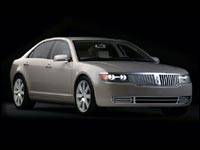 Those 19-inch wheels on the Zephyr ''play an important role generating a positive first impression,'' says David Woodhouse, who led the design team who created it, ''and these wheels reinforce the Lincoln Zephyr's confident personality.'' Those 19-inch wheels on the Zephyr ''play an important role generating a positive first impression,'' says David Woodhouse, who led the design team who created it, ''and these wheels reinforce the Lincoln Zephyr's confident personality.''
Zephyr's color -- a warm golden silver called Cashmere -- was chosen to work in harmony with what Woodhouse calls the ''dramatic'' cabin design. The side profile is complemented by chrome trim at the belt line, door handles and mirror caps, and the soft glow of satin aluminum wheels. The light body color also provides a strong contrast to the bold, dark window graphics. The rear bumper surface is nearly flush, Woodhouse says, and that ''contributes to the clean, uncluttered lines. Completing the effect is a lower tray framed by a thin line of bright metal trim milled from solid aluminum. Twin chrome tailpipes set wide apart extend through the lower fascia.'' The horizontal theme continues at the front of the car, where a classic Lincoln grille, executed in chrome, is flanked by wide, jeweled headlamps with projector-style barrels whose lower edges dip into the horizontal turn signals. Another designer, Phil Simmons, says ''there's a strong European influence in the design theme, but we didn't lose the essential North American qualities. You see that in the way it carries itself -- there's a uniquely North American confidence, a certain swagger, almost.'' 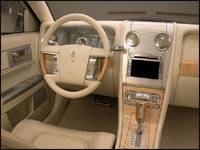 Design themes explored in a series of recent Lincoln concepts come into sharp focus in the interior of the new Lincoln Zephyr, says Marek Reichman, the director of interior design strategy, so ''expect to see most of these elements again when the production car is unveiled.'' Design themes explored in a series of recent Lincoln concepts come into sharp focus in the interior of the new Lincoln Zephyr, says Marek Reichman, the director of interior design strategy, so ''expect to see most of these elements again when the production car is unveiled.''
In Reichman's view, the key interior features of the Zephyr ''are a commanding driving environment and the sophisticated interplay between surface textures, such as satin aluminum, chrome, leather and wood.''
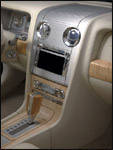 The center console flows upward into a symmetrical, full-width instrument panel. The center stack features a prominent information center that serves as the controller for the exclusive THX-certified ultra premium audio system as well as a navigational screen. All buttons and knobs are chromed, as are the one-touch louvered air vents, interior door handles and the control stalks on either side of the steering wheel. The center console flows upward into a symmetrical, full-width instrument panel. The center stack features a prominent information center that serves as the controller for the exclusive THX-certified ultra premium audio system as well as a navigational screen. All buttons and knobs are chromed, as are the one-touch louvered air vents, interior door handles and the control stalks on either side of the steering wheel.
Zephyr interior features light surfaces that mirror its exterior, including sophisticated Harewood, an exotic wood installed with its fine grain pattern running horizontally. The gauges were inspired by stylish wristwatches, with rounded rectangular housings, light faces and chrome hubs and pointers. To play up the sporty nature of the Zephyr, the tachometer is given equal prominence with the speedometer in the symmetric array. The seats are faced in new, softer premium leather, with shapes inspired by the classic Eames lounge chairs, and that gives a ''clean, tailored theme to the seats,'' in Woodhouse's view. Because Zephyr is meant to be a sports-sedan, Martens promises that it will ''provide confident and effortless driving enjoyment.'' Zephyr runs on a specially-tuned and more powerful version of the familiar Duratec 30 3-liter V6 with intake variable cam timing (VCT) and will be mated to a six-speed front-wheel-drive transmission and, sometime in the near future, with optional all-wheel-drive. Martens says the new six-speed will ''amplify engine torque to provide better acceleration than comparable vehicles with four- or five-speed transmissions.'' Furthermore, Martens says, the transmission's electronic throttle control and the electronically controlled transmission calibration ''assure smooth and seamless shifts, for quiet performance worthy of the Lincoln brand.'' In a nice combination of style and substance, the twin exhausts behind the single central muffler help to reduce back pressure, for added performance. Dampers, spring rates and bushings in the fully independent suspension have been specially selected and tuned for Lincoln driving characteristics, Martens says, ''with an emphasis on comfort without sacrificing nimble response.''
Martens points out that the power steering system has also been ''uniquely tuned to complement the suspension and tires, which have unique internal construction for comfort and quiet performance.'' As for that name, it was chosen to ''recall an era of elegance,'' Martens says, and that would be the 1936 Lincoln Zephyr of designer John Tjaarda, who drew inspiration ''from the aerodynamic 'streamliner' trains that were catching America's imagination at the time, including the record-setting diesel-powered Burlington Zephyr that helped to end the age of steam.'' ''Despite its elegant appearance in 1936,'' says Martens, ''the Zephyr was by far the least costly Lincoln of the time, benefiting from mass-production efficiencies.'' At the time, of course, the Zephyr probably also had its own unique platform, but those days have passed for Ford.
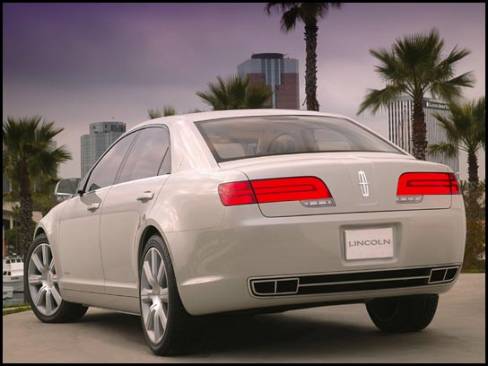
|


